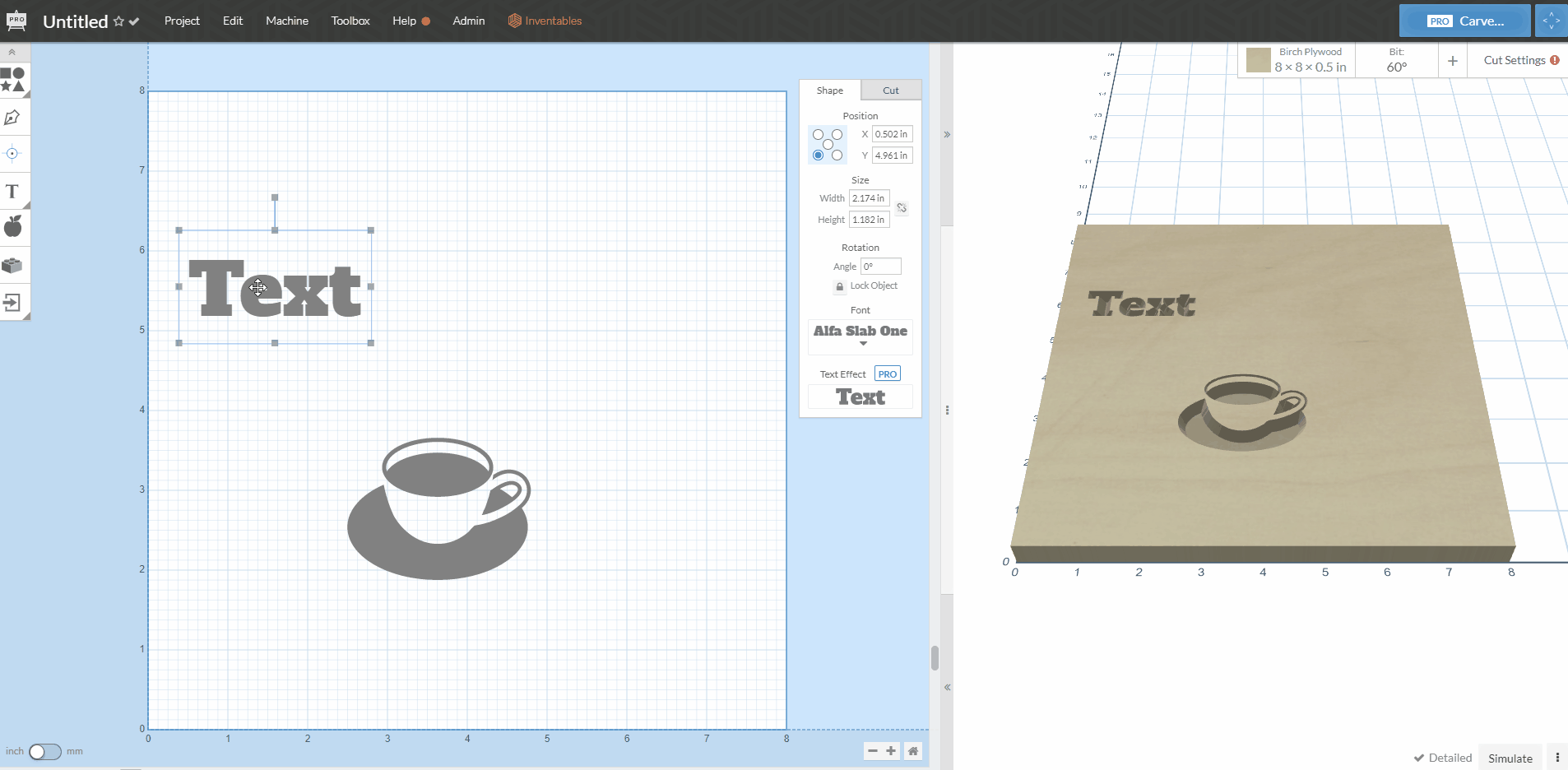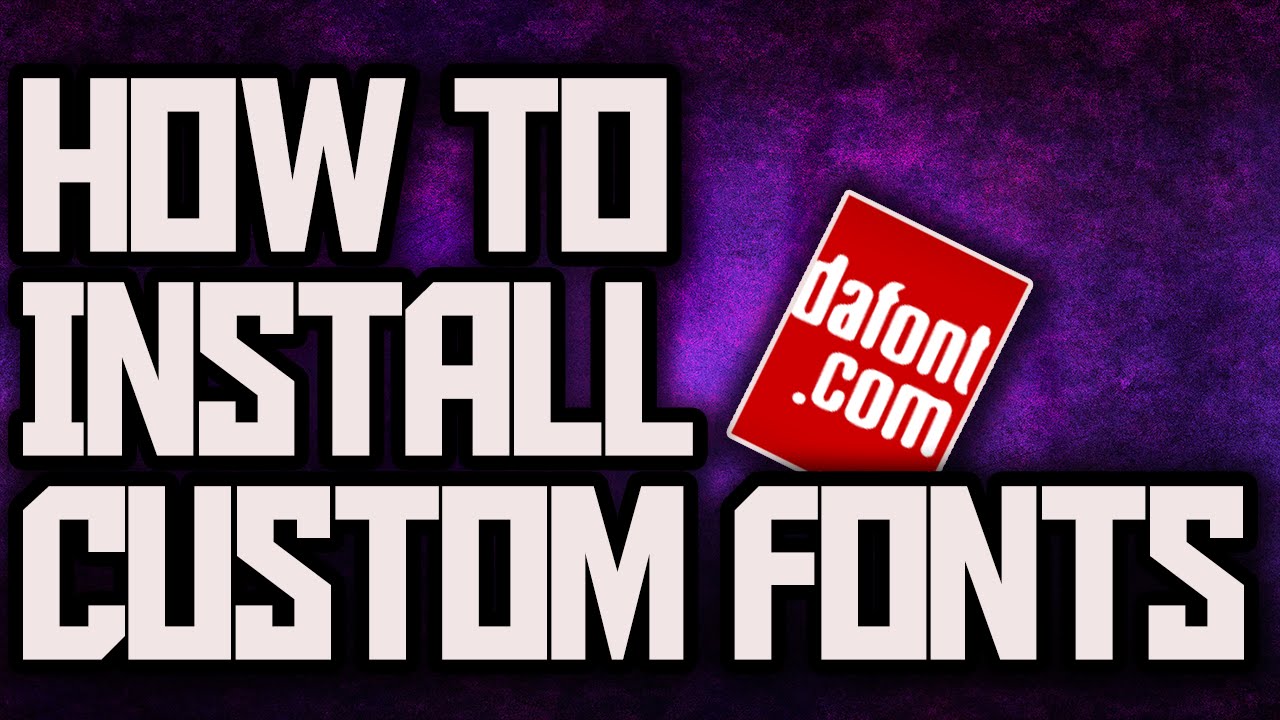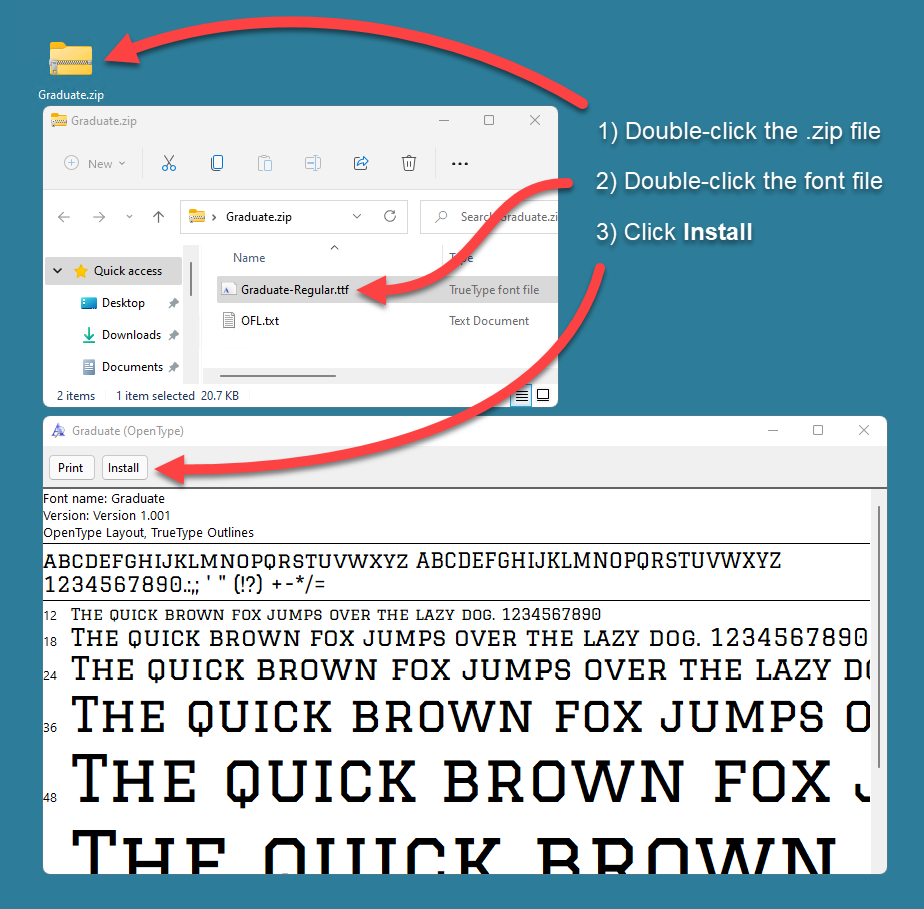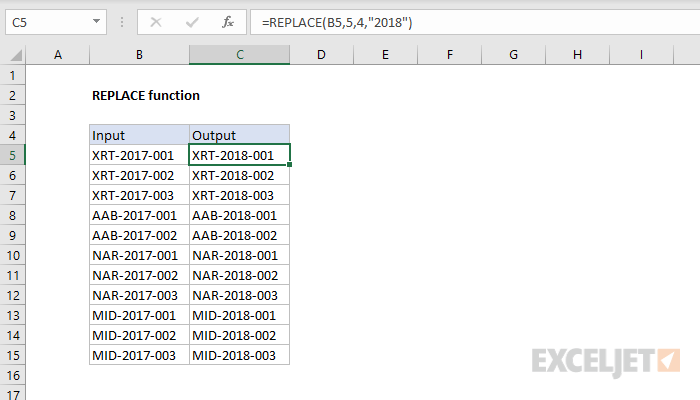How to Install Fonts: 5 Easy Steps

Fonts play a crucial role in the visual appeal and overall design of any digital project. Whether you're a graphic designer, a web developer, or simply a user looking to enhance your document's aesthetics, knowing how to install fonts is an essential skill. In this comprehensive guide, we'll walk you through the process of installing fonts, ensuring you have the tools and knowledge to bring your creative vision to life.
Understanding Font Installation

Before diving into the installation process, it’s important to grasp the concept of fonts and their role in digital design. Fonts, also known as typefaces, are the artistic representations of characters, numbers, and symbols that make up the written language. They come in various styles, from classic serifs to modern sans-serifs, each offering a unique aesthetic and tone.
When you install a font, you're essentially adding it to your system's library, making it accessible for use in various applications such as word processors, design software, and web browsers. This allows you to apply the font's distinctive style to your text, giving your projects a professional and personalized touch.
Step 1: Acquiring Fonts

The first step in installing fonts is obtaining the font files you wish to use. Fonts are typically distributed in compressed formats such as .zip or .rar files. These files contain the font data, often in formats like TrueType (.ttf) or OpenType (.otf). You can acquire fonts from various sources, including:
- Font Libraries: Online font libraries offer a vast collection of fonts, both free and premium. Some popular choices include Google Fonts, Font Squirrel, and Adobe Fonts.
- Design Marketplaces: Websites like Creative Market and Fontspring showcase a wide range of fonts, often created by independent designers. These fonts may come with additional features and licenses for commercial use.
- Design Software: Many design applications, such as Adobe Creative Suite or Canva, offer built-in font libraries. These fonts are optimized for use within the software and can be easily installed and accessed.
- Direct Downloads: Some font designers provide direct download links on their websites or through email subscriptions. Ensure you download fonts from trusted sources to avoid potential malware risks.
Choosing the Right Fonts
When selecting fonts, consider the purpose and style of your project. Different fonts convey different moods and emotions, so choose wisely to align with your design goals. Here are some factors to keep in mind:
- Readability: Ensure the font is legible and easy to read, especially for body text. Avoid overly decorative fonts that may hinder readability.
- Style and Tone: Select fonts that match the tone and theme of your project. Serif fonts often convey a traditional or elegant feel, while sans-serif fonts are more modern and versatile.
- Font Pairing: Consider using complementary fonts for different elements of your design. Combining fonts can create visual interest and hierarchy.
- Licensing: Be mindful of font licensing. Some fonts are free for personal use only, while others require a license for commercial projects. Ensure you comply with the terms to avoid legal issues.
Step 2: Unzipping and Extracting Fonts
Once you’ve acquired the font files, the next step is to extract them from the compressed format. This process varies slightly depending on your operating system and the file type.
Windows Users
If you’re using a Windows operating system, follow these steps to unzip and extract fonts:
- Locate the downloaded font file on your computer. Right-click on the file and select "Extract All" or "Unzip" from the context menu.
- A dialog box will appear, allowing you to choose the destination folder for the extracted files. Select a convenient location, such as your Downloads folder, and click "Extract".
- After extraction, navigate to the destination folder and confirm that you can see the font files. They will typically have extensions like .ttf or .otf.
Mac Users
For Mac users, extracting fonts is a straightforward process:
- Locate the downloaded font file and double-click on it. This will automatically open the font in the Font Book application.
- In Font Book, click on the "Install" button at the bottom of the window. This will copy the font to your system's font library.
- Alternatively, you can manually extract the font files by right-clicking on the downloaded file and selecting "Show Package Contents". From there, navigate to the Contents folder, then Fonts, and copy the font files to your desired location.
Step 3: Installing Fonts on Windows
Now that you have the font files extracted, it’s time to install them on your Windows system. Here’s how:
- Open the Control Panel and navigate to "Appearance and Personalization".
- Click on "Fonts" to open the Font Management window.
- In the Font Management window, click on the "File" menu and select "Install New Font".
- Browse to the location where you extracted the font files and select the font you wish to install. You can install multiple fonts at once by holding the Ctrl key while selecting.
- Click "Install" to add the font to your system. You will see the font appear in the font list, indicating a successful installation.
Common Windows Font Locations
By default, Windows installs fonts in the following locations:
- C:\Windows\Fonts: This is the primary font directory, where system fonts are stored.
- C:\Users\YourUsername\AppData\Local\Microsoft\Windows\Fonts: Fonts installed by applications are typically found here.
Step 4: Installing Fonts on Mac

Installing fonts on a Mac is a simple process, thanks to the built-in Font Book application. Here’s how to do it:
- Locate the font file you wish to install and double-click on it. This will open the font in Font Book.
- In Font Book, you can preview the font by selecting it and clicking on the "Preview" tab. This allows you to assess the font's appearance before installing.
- If you're satisfied with the font, click on the "Install" button at the bottom of the window. The font will be added to your system's font library.
- You can also install multiple fonts at once by holding down the Command key while selecting fonts and then clicking "Install".
Common Mac Font Locations
On a Mac, fonts are typically installed in the following locations:
- /Library/Fonts: System fonts and fonts shared across user accounts are stored here.
- /Users/YourUsername/Library/Fonts: Fonts installed by individual users are found in this directory.
Step 5: Verifying Font Installation
After installing fonts, it’s important to verify that they are accessible and functioning correctly. Here’s how you can check:
Windows Users
- Open a text editor or word processing application, such as Microsoft Word or Notepad.
- Type a sample text and select the newly installed font from the font dropdown menu.
- If the text appears in the selected font, the installation was successful. You can now use the font in your desired applications.
Mac Users
- Open a text editor or word processing application, such as Pages or TextEdit.
- Type a sample text and select the newly installed font from the font menu.
- If the text appears in the chosen font, the installation was a success. You can now utilize the font across various applications on your Mac.
Advanced Font Management
While the basic installation process is straightforward, advanced users may benefit from additional font management tools. These tools offer features like font previewing, activation/deactivation, and font organization.
Font Management Software
Several font management applications are available for both Windows and Mac platforms. These tools provide a centralized location for font management, allowing you to preview, activate, and organize fonts efficiently. Some popular options include:
- FontBase: A free, open-source font manager with a clean and intuitive interface. It offers font activation, organization, and syncing across devices.
- NexusFont: A lightweight font manager for Windows, offering font previewing, filtering, and quick access to fonts.
- Font Explorer X: A powerful font management tool for Mac, featuring advanced font organization, activation, and syncing capabilities.
Font Previewing and Testing
Before using a font in a project, it’s good practice to preview and test it. This ensures that the font meets your design requirements and functions correctly across different applications. Here are some tools to assist with font previewing and testing:
- Font Book (Mac): Built into macOS, Font Book allows you to preview and test fonts before installation.
- FontBase: As mentioned earlier, FontBase provides font previewing and testing capabilities.
- Fontself: A unique tool that lets you create and edit fonts directly within Adobe Illustrator or Photoshop, offering real-time font previewing and testing.
Troubleshooting Font Issues
While font installation is generally straightforward, issues can occasionally arise. Here are some common problems and their solutions:
Font Not Appearing in Applications
If a newly installed font doesn’t show up in your applications, ensure that the font is activated. On Windows, you can activate fonts by right-clicking on the font file and selecting “Install”. On Mac, use Font Book to activate fonts.
Font Missing Glyphs or Characters
If a font is missing certain glyphs or characters, it may be due to a corrupt font file or an incomplete font installation. Try reinstalling the font or acquiring a new copy from a trusted source.
Font Rendering Issues
If fonts appear blurry or distorted, it could be due to incorrect font rendering settings. On Windows, you can adjust font rendering by going to the Control Panel, selecting “Appearance and Personalization”, and then “Display”. On Mac, you can adjust font smoothing in the System Preferences under “General” or “Accessibility”.
Conclusion
Installing fonts is a fundamental skill for anyone involved in digital design or content creation. By following the steps outlined in this guide, you can effortlessly add new fonts to your system and enhance the visual appeal of your projects. Remember to choose fonts wisely, considering factors like readability, style, and licensing. With a well-curated font collection, you’ll have the tools to bring your creative ideas to life and make a lasting impression.
How many fonts can I install on my computer without affecting performance?
+The number of fonts you can install without affecting performance depends on various factors, including your system’s hardware specifications and the complexity of the fonts themselves. As a general guideline, having 500-1000 fonts installed should not cause significant performance issues for most users. However, if you’re working with very complex or large font files, it’s advisable to keep the number of installed fonts manageable to avoid unnecessary strain on your system’s resources.
Can I install fonts on my mobile devices, such as smartphones or tablets?
+Mobile devices have limited font installation capabilities compared to desktop systems. On iOS devices, you can install custom fonts by using third-party font management apps, such as iFont or Fontsy. On Android devices, you can install fonts by transferring the font files to your device’s storage and using a font installer app like FontFix. However, it’s important to note that the availability and ease of font installation on mobile devices may vary depending on the device’s manufacturer and operating system version.
Are there any legal considerations when using and installing fonts?
+Yes, it’s crucial to be aware of the legal aspects surrounding font usage and installation. Fonts are protected by copyright laws, and using fonts without proper licensing can lead to legal consequences. Always ensure that you acquire fonts from reputable sources and comply with the terms of the font license. Some fonts are free for personal use only, while others require a license for commercial projects. Failure to adhere to licensing terms can result in fines or legal action, so it’s essential to respect the intellectual property rights of font designers.



